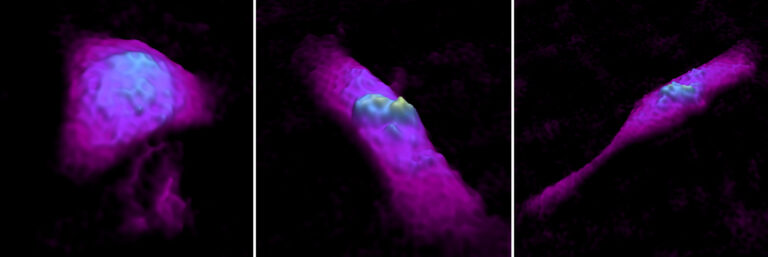
Using HoloMonitor’s unique capability to non-invasively image and quantify cellular behavior over long time periods, scientists at the National Institute on Aging aim to understand how the heart’s “brain cells” contribute to aging. National Institute on Aging (NIA) is one of the 27 research institutes of the United States National Institutes of Health, leading a broad scientific effort to understand the nature of aging and thereby extend our healthy, active years of life.
Scientists are realizing that the heart’s nervous system is a lot more sophisticated than previously thought. Heart nerve cells seem to do more than merely transmit signals to the brain; they seem to also communicate and process information, similar to what neurons do in the brain. This discovery has led to that scientists increasingly speak of “The Brain of the Heart”.
The researchers at NIA will use isolated nerve cells from rodent (swe: gnagare) hearts, instead of the more common practice of using so-called cell lines. Cell lines consist of cells that have been isolated from the body and adapted to a life in a plastic dish, rather than replicating cellular behavior in the human body. Cell lines neither age nor die like normal cells, allowing them to be conveniently cultured in the laboratory in large quantities.
Studies show that only 10 – 25 % of “landmark” preclinical discoveries can be verified by other researchers,1,2,3 explaining the 90 % failure rate of clinical trials and the alarmingly high cost of drug development.4 One of the major factors contributing to the low verification rate is the widespread and, in many cases, indiscriminate (swe: urskillningslösa) use of laboratory cell lines.5
To improve the medical relevance of preclinical research, scientists therefore increasingly use the “real thing” — primary cells taken directly from patients or donor animals. Contrary to conventional cell analysis instrumentation, which commonly relies on an unlimited supply of cell line cells, the HoloMonitor purchase will allow the scientists at NIA to non-destructively extract as much information as possible from the few and precious cells they painfully have isolated and cultured.
Peter Egelberg
CEO and founder

Primary cell with varying morphology imaged with HoloMonitor.
References
- Raise standards for preclinical cancer research, Nature (2012)
- Believe it or not: how much can we rely on published data on potential drug targets?, Nature Reviews Drug Discovery (2011)
- Reproducibility in science: improving the standard for basic and preclinical research, Circulation Research (2015)
- Innovation in the pharmaceutical industry: New estimates of R&D costs, Journal of Health Economics (2016)
- Fixing problems with cell lines, Science (2014)